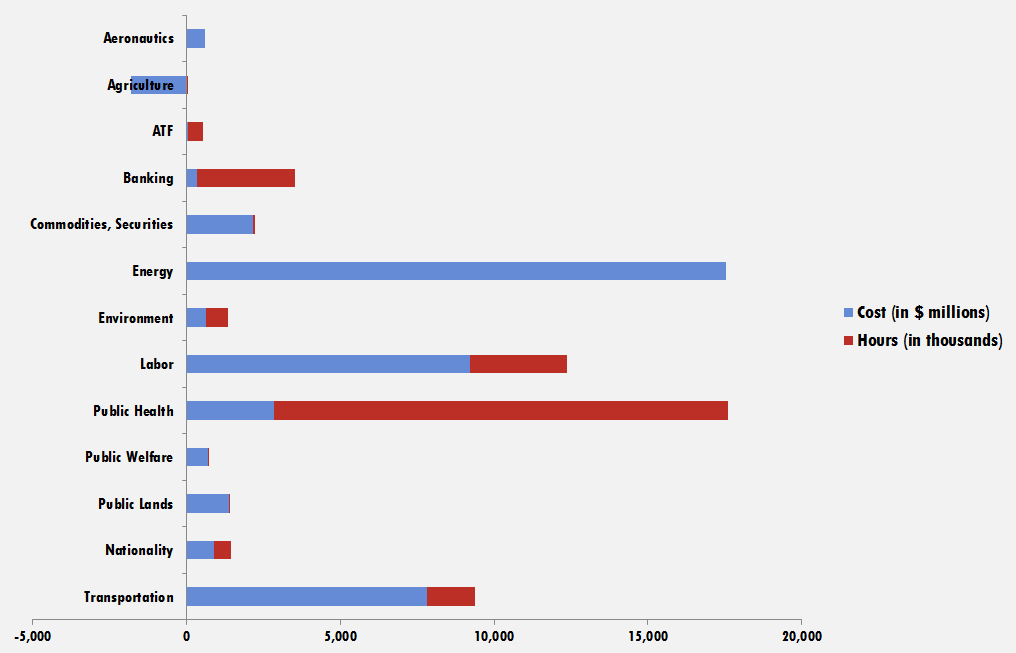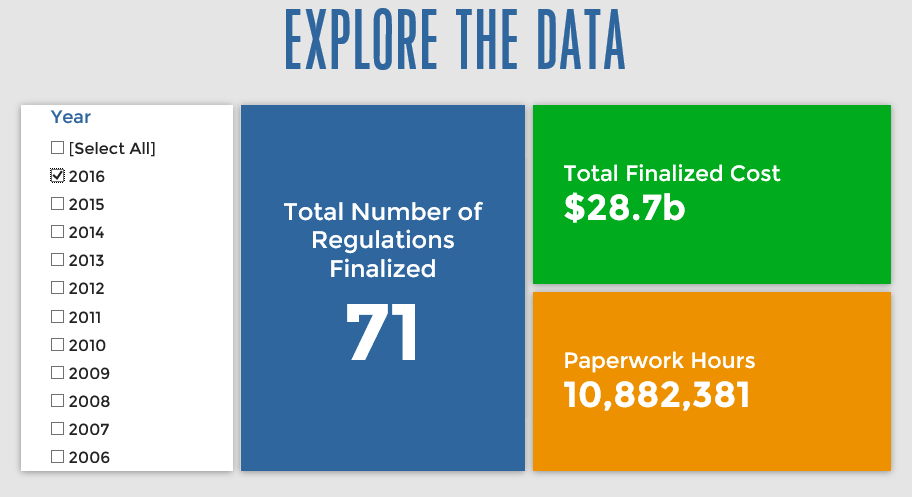Week in Regulation
March 28, 2016
$9.8 Billion in Regulatory Costs
Regulators narrowly missed the $10 billion threshold this week. Thanks to the Department of Labor’s (DOL) final Silica rule, annual regulatory costs topped $1.1 billion, with $4.9 billion in benefits; paperwork accelerated by 2.6 million hours. The per capita regulatory burden for 2016 is $130.
Regulatory Toplines
- New Proposed Rules: 38
- New Final Rules: 53
- 2016 Total Pages of Regulation: 17,058
- 2016 Final Rules: $28.7 Billion
- 2016 Proposed Rules: $13.5 Billion
The American Action Forum (AAF) has catalogued regulations according to their codification in the Code of Federal Regulations (CFR). The CFR is organized into 50 titles, with each title corresponding to an industry or part of government. This snapshot will help to determine which sectors of the economy receive the highest number of regulatory actions.
After a nearly two decades winding its way through the regulatory process, DOL’s silica rule landed in the Federal Register this week. Annual costs eclipsed $1 billion, a significant jump from the $657 million figure in the proposed version. Given the intense industry lobbying, both for and against the measure, it’s probably no surprise the final benefit-cost analysis moved considerably.
Costs of the Silica rule were driven mainly by new engineering controls, respirators for employees, exposure assessments, and medical surveillance. The agency estimated the rule could save roughly 642 lives from “silica-related mortality” and 918 due to reductions in “silica-related morbidity,” contributing to the rule’s $4.8 billion benefit figure.
The Department of Energy (DOE) proposed a rule to set efficiency standards for “Commercial Packaged Boilers.” The measure imposes costs of $51 million, compared to $143 million in benefits. The public has until May 23, 2016 to submit formal comments.
Affordable Care Act
Since passage, based on total lifetime costs of the regulations, the Affordable Care Act has imposed costs of $52.2 billion in state and private-sector burdens and 186.7 million annual paperwork hours (170.9 million from final rules).
Dodd-Frank
Click here to view the total estimated revised costs from Dodd-Frank; since passage, the legislation has produced more than 76.5 million paperwork burden hours and imposed $39.2 billion in direct compliance costs.
Total Burdens
Since January 1, the federal government has published $42.2 billion in compliance costs ($28.7 billion in final rules) and has imposed 25.3 million in net paperwork burden hours (10.8 million from final rules). Click below for the latest Reg Rodeo findings.












